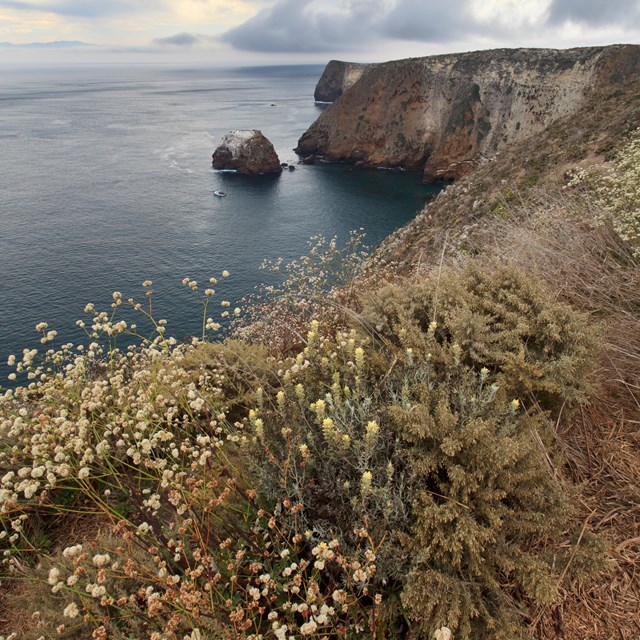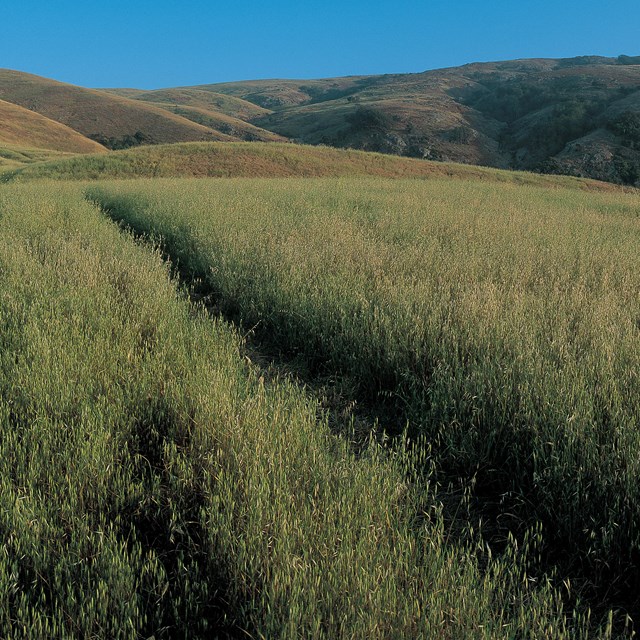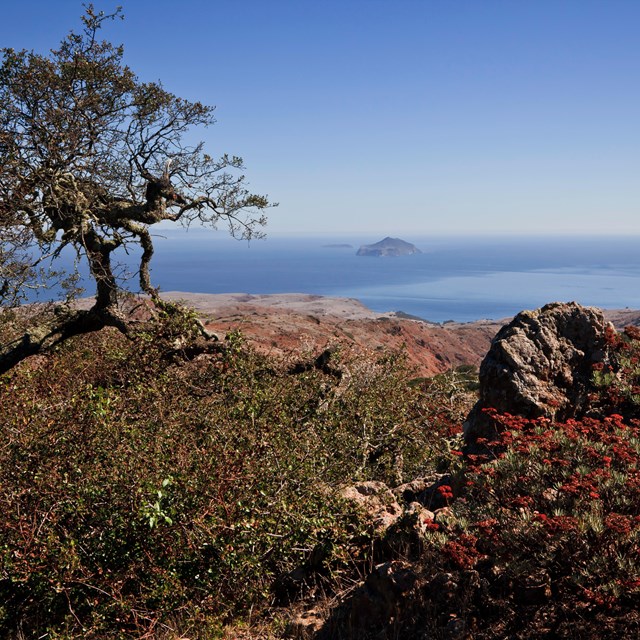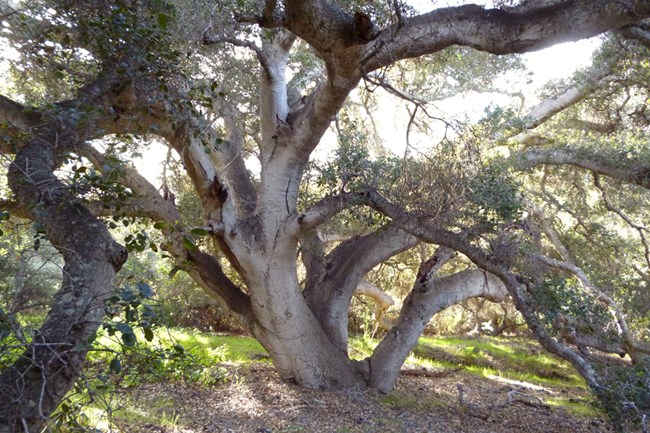
The landscape of Channel Islands National Park is so interesting in large part because it is characterized by so many different habitats, all strongly influenced by the area’s Mediterranean and maritime climates. Nearly all the habitats within the park have also been influenced by how people have used the land in the past. Non-native animals such as sheep, cattle, deer, elk, pigs, and rabbits were introduced onto the various islands beginning in the mid-1800s as ranches and other businesses were established on the islands. Non-native plants were also introduced to the park either intentionally or accidentally. Almost one quarter of the park’s 800 known plant varieties are considered non-native. Each park island supports its own unique combination of habitats. The differences can be subtle, and are due to different microclimates, topography, geology, soils, plant colonization histories, and particular land use histories. Size is also a factor. The larger islands have larger elevation changes and more complex geologic features resulting in more microclimates and a greater variety of habitats. Santa Barbara IslandThe native habitats on this small island were heavily damaged by years of grazing by introduced sheep and rabbits. Today it is dominated by exotic grasslands though native plants, and the nesting landbirds they support, are beginning to recover with the help of restoration efforts. A handful of shrub habitats also exist, like coastal sage scrub. There are no trees or freshwater habitats on Santa Barbara Island. Anacapa IslandThe second smallest of the Channel Islands, Anacapa Island is actually composed of three smaller islets. East and Middle Anacapa are flat plateaus while West Anacapa is a mountainous ridge. This, in addition to different land use histories (e.g. sheep ranching and lighthouse activity), has led to some differences in vegetation. All three islets have coastal sage scrub on their southern slopes, though this habitat is most well developed on West Anacapa which was less heavily used in the past. Grasslands are prevalent on East and Middle Anacapa, but patchier on West Anacapa. West Anacapa has small oak woodlands and stands of chaparral in the deep, moist canyons on its north-facing slopes. San Miguel Island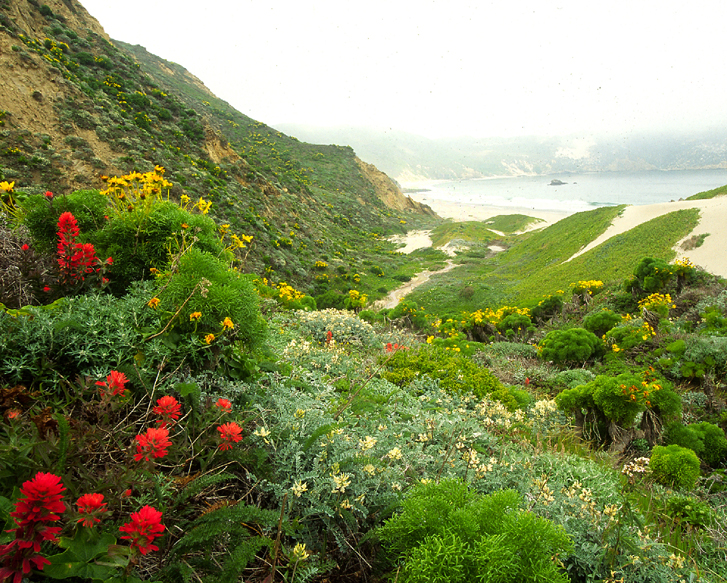
San Miguel Island is a small island with sandy soils and a pronounced northwest-southeast orientation to its topography. This island experienced severe overgrazing and erosion during the late 1800’s and in the early part of the 20th century. Since the final removal of all introduced herbivores in 1977, the native vegetation has recovered dramatically. Today, grassland is one of the dominant plant communities occurring on all parts of the island. Coastal sage scrub is most extensive on the island’s steep southern slope and on some south-facing canyon walls, with several other types of scrub habitat also occurring on different parts of the island. San Miguel is the smallest island to support a chaparral community, albeit a very underdeveloped one. Coastal sage scrub and chaparral are among the preferred habitats of endemic island foxes found on San Miguel and each of the larger islands. Santa Rosa IslandThe habitats found on Santa Rosa Island are quite diverse because of the island’s relatively large size and elevational range. Grassland dominated by exotic grasses is the most prevalent community, although native species retain dominance in some areas. Coastal sage scrub is also one of the more common habitats on the island. Chaparral is present in some parts of the island, sometimes interspersed with trees. Many tree species, most of which are not present on the smaller islands, give way to many kinds of woodland habitat on Santa Rosa. Other habitats on Santa Rosa that are rare on the smaller islands include riparian communities, vernal pools, and marshy wetlands. Many of the freshwater habitats have been especially degraded by years of cattle ranching that continued until 1998. Even as they recover, the diversity of habitats on Santa Rosa Island support a wide array of plants and animals including around 500 plant species, 100 bird species, three mammals, three reptiles, and two amphibians. Santa Cruz IslandSanta Cruz Island as a whole is the largest and most diverse island in Channel Islands National Park, however only the eastern part of the island is owned and administered by the National Park Service. The condition and extent of eastern Santa Cruz Island habitats reflects the grazing history of the island. From the 1850’s to 1999, this part of the island was severely disturbed by the presence of feral sheep, pigs, and other introduced species. Feral sheep were eliminated from the western 90% of the island by the late 1980s, but remained on the eastern 10% until the last animal was removed in 2001. Feral pigs were eliminated island-wide by 2006. Free from grazing sheep and rooting pigs, the native vegetation has begun to recover. The plateaus and flatter parts of eastern Santa Cruz Island are dominated by exotic grasslands interspersed with patches of native grasses and solitary shrubs that hint at the previous extent of scrub habitat. As the terrain gets steeper, the grasslands are replaced by chaparral and woodlands. Riparian areas also exist, although they remain extremely degraded from past grazing. |
Last updated: January 19, 2017

